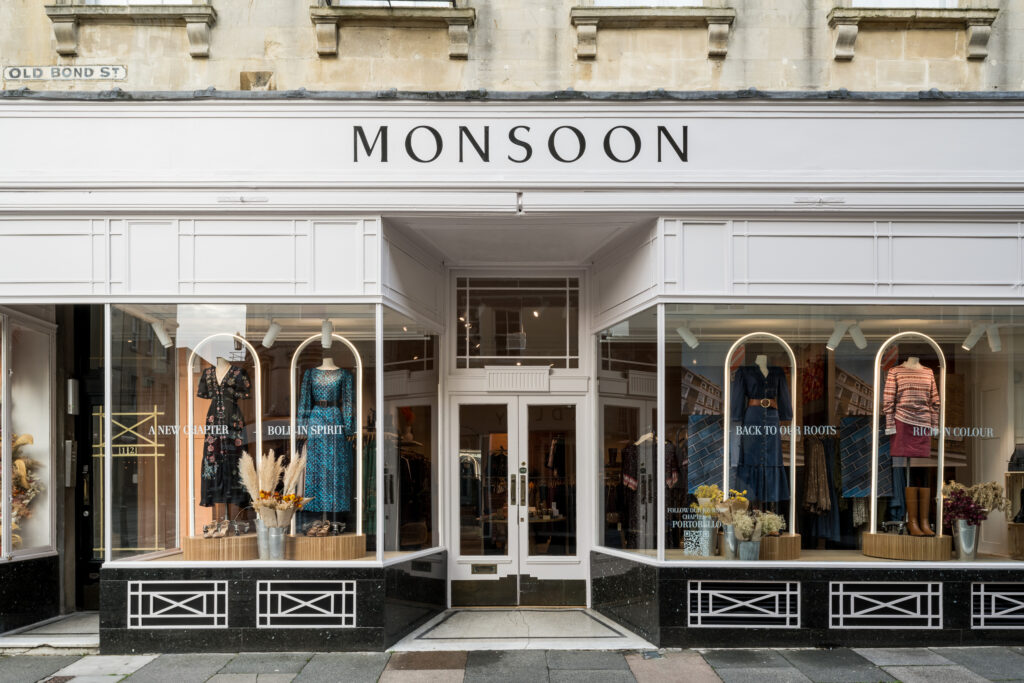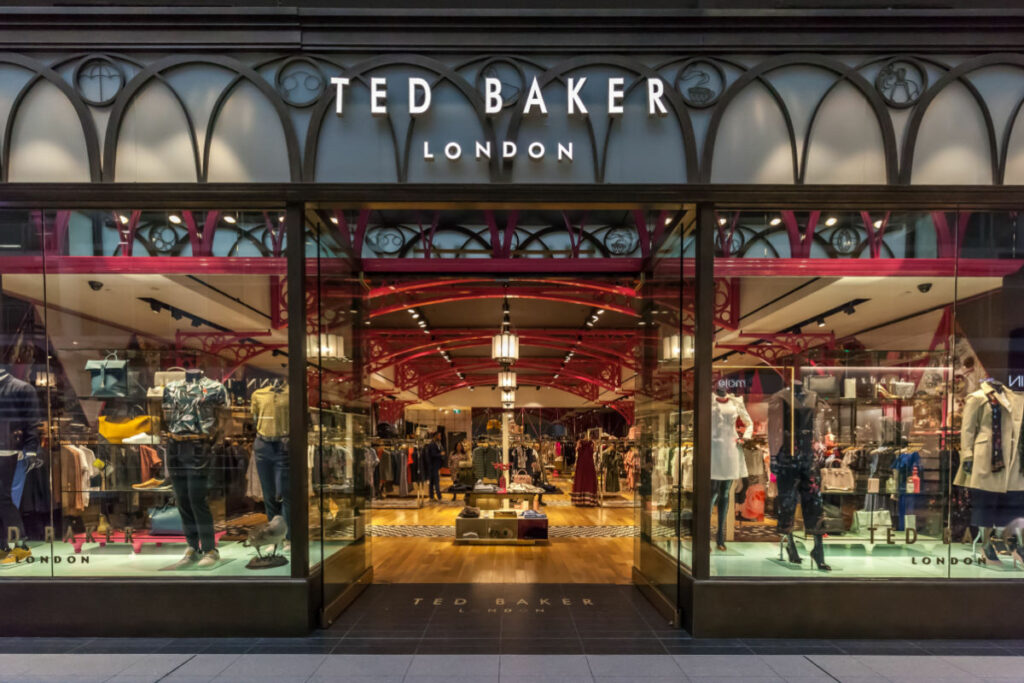It’s Friday night, you’re getting ready with the girls and pulling out options to wear.
You dig out that cute top you stumbled across in Barnardo’s when your best friend asks where you bought it. ‘Is it Asos?’ she asks, pulling out her phone ready to place an order.
With a smug smile you say ‘I thrifted it a while back’.
This is a scene that is being played out in the bedrooms of many Gen Z shoppers as charity shops are fast-becoming the go-to destination for young shoppers, giving them access to brands they may never have been able to pick up without breaking the bank.
The Charity Retail Association, the national body representing charity retailers, said in 2022 their combined 9,000 shops saw sales rise 10% compared to the same period in 2021, raising approximately £360m a year.
Such is the popularity of the format that the UK’s first multi-charity department store, Charity Super.Mkt, opened earlier this year in Brent Cross shopping centre in London.
The pop-up houses 10 charities: TRAID, Havens Hospice, Barnado’s, Shelter, Cancer Research, Age UK, Marie Curie, Emmaus, SCT and All Aboard.
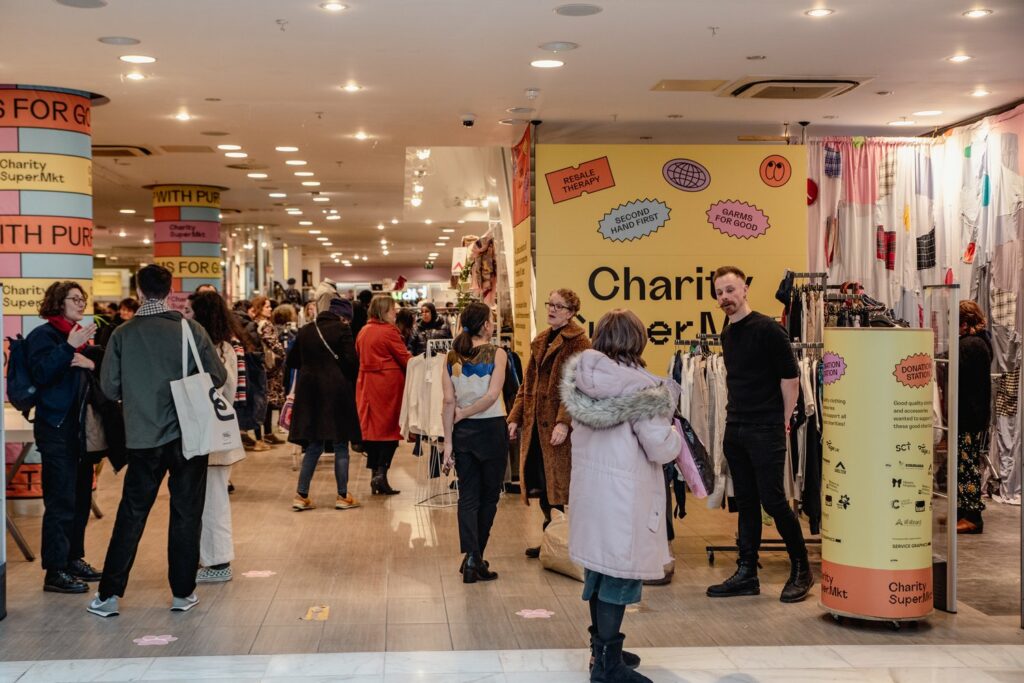
The concept is the brainchild of Wayne Hemingway MBE, founder of British fashion brand Red or Dead and Maria Chenoweth, CEO of TRAID, and is a destination where people can shop the best of charity retail all in one place.
The four-week London pop-up ran by volunteers was such a success it was extended for an extra two weeks. A Bristol pop-up is set to open on 20 July.
What’s behind the charity shop boom?
While vintage fashion has long been popular – think Sex And The City fashion icon Carrie Bradshaw in the late nineties and noughties – there’s no denying the recent boom in charity shops is taking on new vigour.
Open up Instagram and you’ll see that #thriftedfashion has 4.5m posts and on TikTok it has a staggering 1.1bn views.
It’s a similar story on YouTube, where thousands of influencers can be found documenting their charity shop escapades and the bargains they pick up along the way.
Cancer Research UK director of trading Julie Byard explains that over the past year, they’ve seen public interest in charity shopping “grow quickly”.
She gives a number of reasons for the trend, including the cost-of-living crisis hitting budgets.
A recent YouGov opinion poll revealed that financial concerns is the primary factor for the rising popularity of charity shops, with 38% of respondents stating they have bought a used item in the past three months because it was more cost effective.
However, shoppers’ desire to make more environmentally sound decisions is also spurrring the trend.
“Charity shops play an important role in extending the lifecycle of thousands of products, including fashion garments,” says Byard.
Mind director of retail Andrew Vale concurs: “We know that younger generations are passionate about the planet and are frequently looking for ways to live a more sustainable lifestyle.”
“Thrifting at a charity shop is the ultimate choice for eco-conscious shoppers, and donating is a great way of de-cluttering cupboards without cluttering up the environment.”
Making charity shops stylish
Caireen Wackett, chief executive of Mary Portas consultancy, says the new narrative around pre-loved has led to the rise of the charity shop.
“Second hand is desirable now and we saw that go mainstream with the partnership between Love Island and eBay,” she says.
Many charity shops are playing into this trend. For example, the British Heart Foundation stores are quick to tap into what consumers want, through the use of in-store displays dedicated to popular trends including Glastonbury, Love Island and Stranger Things.
Wackett explains that moving with the times was core to her efforts of creating Mary’s Living and Giving, the boutique-style charity shop she helped to develop with Mary Portas for Save the Children.
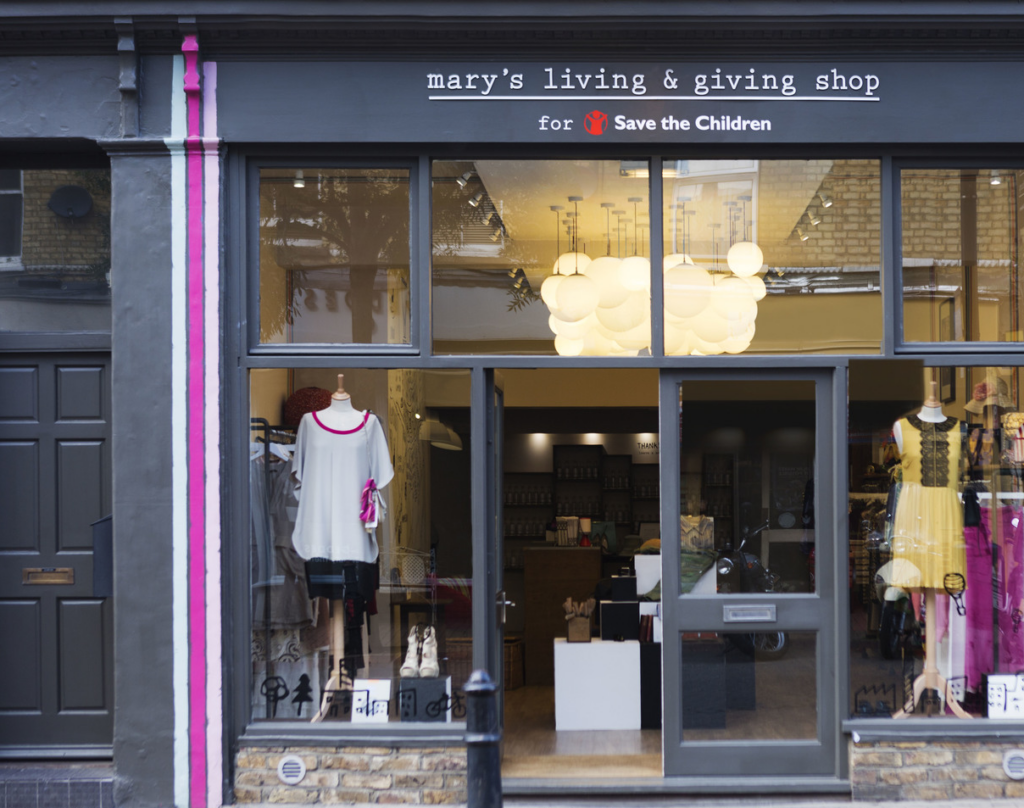
“When we started on the project, charity shops were the places where fashion went to die. But we reinvented them for the new future we saw coming.”
The first Mary’s Living & Giving shop opened back in 2010 but Wackett adds that “even then, we could see that second hand had huge potential”.
“Not just in terms of resale and price point, but also its value system of community and connectivity – all the things we talk to in retail as a whole.”
As well as a boutique-style shopfit, Mary Portas and Save the Children’s stores also act as community hubs where people can come to find inspiration, share a bit of local news or a new skill.
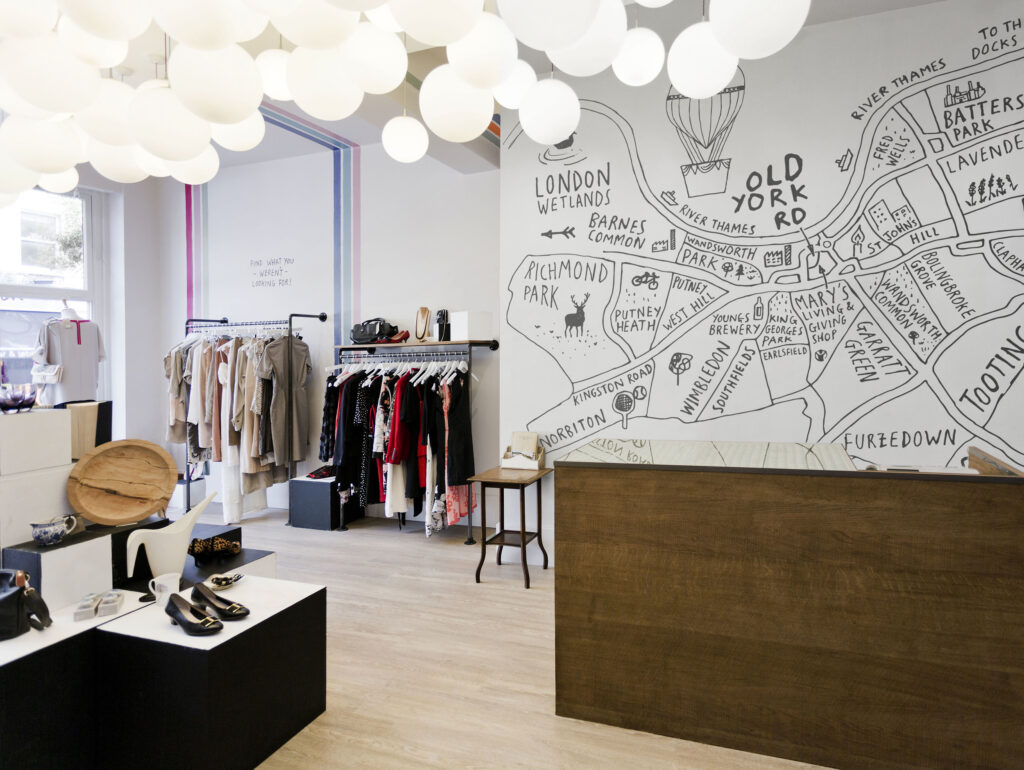
It is not the only brand that is taking charity shops upmarket.
Byard says Cancer Research strives “to offer the public a variety of shopping options which reflect different price points,” she says.
As well as high street stores, Cancer Research UK has a selection of premium shops, which offer high end fashion, including designer labels, and homeware items at slightly higher prices.
Bolstered by Portas’ black book, premium brands are also a feature in Mary’s Living & Giving whilst last year Mind opened the doors to Carnaby’s first permanent charity shop, housing a curated collection of preloved vintage and designer stock.
Items inside include a host of luxury designers, including Givenchy, Vivienne Westwood, Burberry, Coach and Louis Vuitton.
Shelter also has a number of boutique stores, designed by Wayne Hemingway, which sell designer, high-end high street and vintage one-off finds at attainable prices. While Sue Ryder has also opened dedicated vintage and retro stores.
Wackett says:”Once it would have been surprising to find designer pieces in charity shops, now it’s a given.”
“There’s one watch though: we need to make sure that charity shops remain accessible at all price points. Designer is great but it must be part of the mix not the only offer.”

Charity shop leaders are ensuring they stay true to their roots. Despite Cancer Research launching premium shops, it has also opened a number of superstores across the country that contain a “huge selection of discounted items” from £1 to £5.
Lili Gusto, director of Word of Mouth Communications and beauty and lifestyle blogger, points out that the majority of charity stops have still have a jumble sale feel.
Rather than being a negative, she says this enhances the experience for some shoppers as they have “the thrill of finding a treasure”.
Charity goes digital
It is not just more premium shop fitouts that have made charity shops more relevant, the sector has also embraced how many young consumers are shopping: online.
Driven by store closures during the pandemic, many operators turned to digital, and the number of items sold online by British charity shops soared 151% between February and July back in 2021.
Although most of these sales took place on eBay, some charity shops invested in their own websites.
Cancer Research UK has its own online shop selling its new ranges, and has embraced marketplaces with an eBay shop, Depop store and listings on Vestiaire Collective, alongside a profile on Asos marketplace filled with pre-loved products.
Byard adds that Cancer Research UK frequently uses social media to share special product donations, bargains, looks you can recreate and the sustainability campaigns that it runs.
“Our Behind the Finds series on Instagram is a great way to find out where you can pick up a designer bargain, or how to pull an outfit together,” says Byard.
“In our latest episode, celebrity fashion stylist Ellis Ransom talks with celebrity Jackie Adedeji about her favourite looks from the 90’s, as they recreate outfits from donations given to us by our wonderful supporters.”
Likewise, Traid uses its Instagram account to house its styling series, where it partners with social media influences to highlight the versality of thrifted clothing as well as promoting its Behind The Seams newsletter.
View this post on Instagram
The charity has also launched Traid Lates, a series of events held at its Dalston and Peckham stores this month from 6pm, where alongside late night shopping, customers can enjoy a live in-store DJ, henna workshops, and an exhibition exploring how clothes are made.
Retailer tie-ups
Charity shops hold appeal to retailers as well as consumers, and offer a way to improve their sustainable credentials.
M&S sends unsold stock to charity partners Oxfam, Newlife or SmartWorks. It also makes it easy for customers to recycle used or unwanted clothing through its Schwopping partnership with Oxfam.
Primark also donates all unsold products to Newlife while Zara donates its excess inventory to the British Red Cross and has collection points for customers to give their products to the charity in stores.
Wackett applauds such initiatives. “Anything that creatively and purposefully solves the problem of dead stock is to be welcomed,” she says.
Taking it one step further than stock donations, AllSaints has a wide-spanning partnership with homelessness charity Shelter.
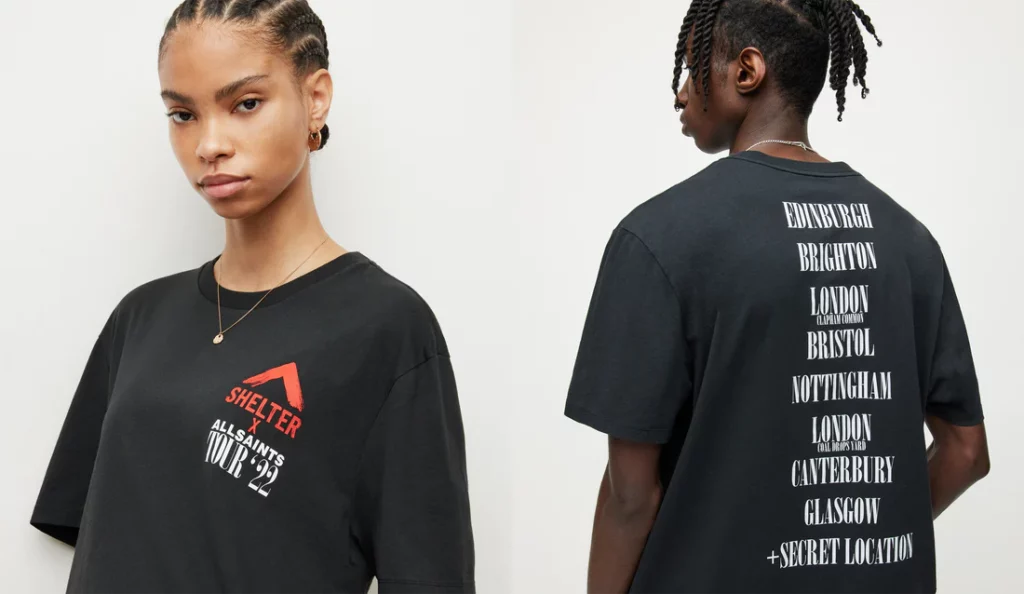
The tie-up first started in 2021 with a retail takeover in the charity’s Coal Drops Yard Boutique and progressed to the opening of 8 AllSaints X Shelter pop-up stores last year, where more than 2,000 pieces of surplus stock donated by AllSaints were sold.
AllSaints also designed and created an exclusive T-Shirt, with all profits donated to Shelter, and hints that there will be “much more to come in the future”.
The opportunities for retailers and charities to combine are plentiful and mutually beneficial. The brands that lend their support are showing that doing good can also be good for business.
Click here to sign up to Retail Gazette‘s free daily email newsletter



